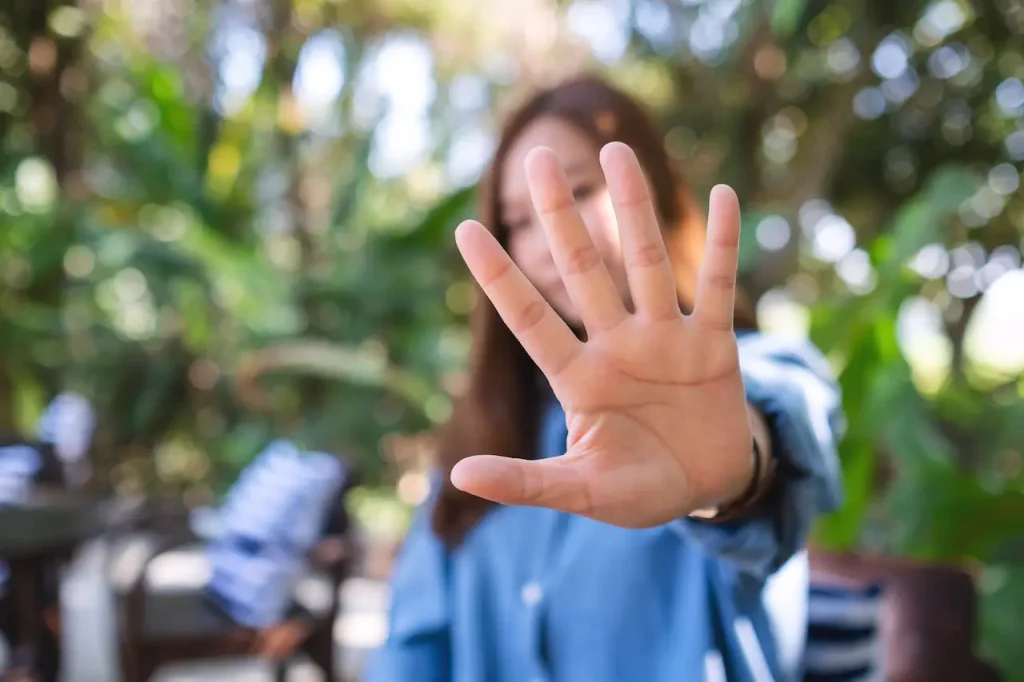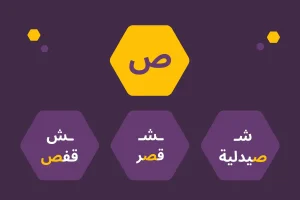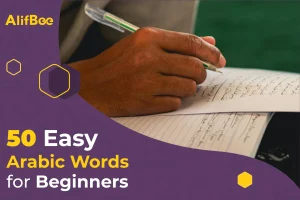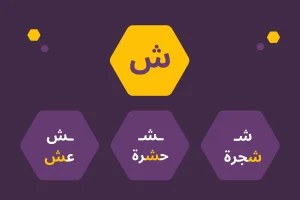
Arabic Hand-related Verbs
Are you learning Arabic and looking to expand your Arabic vocabulary with some expressive verbs?
In this blog post, we continue our blog series that focuses on Arabic verbs that can be used with different body parts. In our previous blog in this series, we looked at verbs that can be used with the eyes. Today, we will explore 10 verbs in Arabic that are related to hands. Understanding and using these verbs can make your conversations more engaging and help you express yourself more effectively.
Let’s start!
Verb 1: يَكْتُبُ \ كَتَبَ
to write
Yaktubu - Kataba
Examples
أمثلة
Muhammad wrote a letter to his friend
Kataba muḥammadun risālatan ilá ṣadīqih
كَتَبَ مُحَمَّدٌ رِسَالَةً إِلَى صَدِيقِه
The student is writing the equation on the chalkboard
Yaktubu alṭṭālibu almuʻādalata ʻalá alssubwrah
يَكْتُبُ الطَّالِبُ المُعَادَلَةَ عَلَى السُّبورَة
The journalist is writing a report about the event
Taktubu alṣṣaḥafīyatu taqrīran ʻani alḥadath
تَكْتُبُ الصَّحَفِيَّةُ تَقْرِيرًا عَنِ الحَدَث
Writing is at the heart of any language, and in Arabic, the verb يكتب
captures this action in the present tense, while كتب denotes the past tense. You can use this verb to describe someone writing a letter or a journalist crafting an insightful report. This Arabic verb is crucial for expressing the act of writing in Arabic.
Verb 2: يَحْمِلُ \ حَمَلَ
to carry
Yaḥmilu - Ḥamala
Examples
أمثلة
The man carries the bag for his wife
Yaḥmilu alrrajulu alḥaqībata lizawjatihi
يَحْمِلُ الرَّجُلُ الحَقِيبَةَ لِزَوْجَتِهِ
The mother carries her child in her arms
Taḥmilu alʼummu ṭifluhā fī dhirāʻayhā
تَحْمِلُ الأُمُّ طِفْلُهَا فِي ذِرَاعَيْهَا
The worker carried the boxes to the warehouse
Ḥamala alʻāmilu alṣṣanādīqa ilá almustawdaʻ
حَمَلَ العَامِلُ الصَّنَادِيْقَ إِلَى المُسْتَودَع
We often carry things in our daily lives, and the Arabic verb يحمل conveys this action, with حمل as its past tense counterpart. As the examples show, you can use this verb to describe various situations, such as someone carrying a bag, cradling a child, or moving boxes to a warehouse.
Verb 3 :يُلَوِّحُ \ لَوَّحَ
to wave
Yulawwiḥu - Lawwaḥa
Examples
أمثلة
The child is waving to his mother from the window
Yulawwiḥu alṭṭiflu liwālidatihi mina alnnāfidhah
يُلَوِّحُ الطِّفْلُ لِوَالِدَتِهِ مِنَ النَّافِذَة
The scientists waved to the audience after the conference
Lawwaḥa alʻulamāʼu liljumhūri baʻda almuʼtamar
لَوَّحَ العُلَمَاءُ لِلجُمْهُورِ بَعْدَ المُؤْتَمَر
The man waved to the taxi driver to stop
Lawwaḥa alraajulu lisāʼiqi alssayyārati liyatawaqqaf
لَوَّحَ الرَّجُلُ لِسَائِقِ السَّيَّارَةِ لِيَتَوَقَّف
We wave to greet each other, bid someone farewell, or attract attention. The Arabic verb يلوّح is used to describe this gesture, while لوّح signifies the past tense. As illustrated in the examples, the verb is used in many situations, like a child waving to their parent, scientists acknowledging an audience or a passenger signaling to a taxi driver.
Verb 4: يُصَافِحُ \ صَافَحَ
to shake hands
Yuṣāfiḥu - Ṣāfaḥa
Examples
أمثلة
The president shook hands with the delegates at the summit
Ṣāfaḥa alrraʼīsu almandwbīna fī alqimmah
صَافَحَ الرَّئِيْسُ المَنْدوبِينَ في القِمَّة
The players shook hands with each other before the match
Ṣāfaḥa alllāʻibwna baʻḍahum albaʻḍ qabla almubārāh
صَافَحَ اللّاعِبونَ بَعْضَهُمْ البَعْض قَبْلَ المُباراة
People shake hands when meeting at social events
Yuṣāfiḥu alnnāsu baʻḍahum ʻinda allliqāʼi fī almunāsabāti alāijtimāʻyh
يُصَافِحُ النّاسُ بَعْضَهُم عِنْدَ اللِّقَاءِ في المُناسَبَاتِ الاِجْتِمَاعية
Handshaking is a vital social custom in numerous cultures, particularly in the Arab world. The Arabic verb يصافح represents this action, and صافح is used for the past tense. You can use this verb to illustrate various contexts, such as a president greeting delegates, athletes exchanging handshakes before a match, or people meeting at social events.
Verb 5: يَرْسُمُ \ رَسَمَ
to draw
Yarsumu - Rasama
Examples
أمثلة
The artist is drawing a new painting
Yarsumu alfannānu lawḥatan jadīdatan
يَرْسُمُ الفَنّانُ لَوْحَةً جَدِيْدَةً
The little girl drew a rainbow on the ground
Rasamati alṭṭiflatu qawsa quzaḥin ʻalá alʼarḍīyah
رَسَمَتِ الطِّفْلَةُ قَوْسَ قُزَحٍ عَلَى الأَرْضِيَّة
The architect draws the building plan
Yarsumu almiʻmārīyu khuṭṭata almabná
يَرْسُمُ المِعْمَارِيُّ خُطَّةَ المَبْنَى
Creating visual art through drawing is a captivating aspect of human expression. In Arabic, the verb يرسم conveys this action, and رسم indicates the past tense. Use this verb to describe an artist working on a new painting, a child creating a chalk drawing, or an architect drafting a building plan.
Verb 6: يُمْسِكُ \ أَمْسَكَ
to hold
Yumsiku - Amsaka
Examples
أمثلة
The doctor is holding the needle
Yumsiku alṭṭabību biālʼibrah
يُمْسِكُ الطَّبِيْبُ بِالإِبْرَة
The bride is holding her partner’s hand
Tumsiku alʻarūsu biyadi sharīkahā
تُمْسِكُ العَرُوسُ بِيَدِ شَرِيْكَهَا
The student holds his pen and starts the exam
Amsaka alṭṭālibu biqalamihi wabadaʼa alāikhtibār
أَمْسَكَ الطَّالِبُ بِقَلَمِهِ وَبَدَأَ الاِخْتِبَار
The action of holding something or someone is a fundamental aspect of human interaction. The Arabic verb يمسك represents this action, with أمسك as the past tense. This versatile verb can be applied to various situations, such as a doctor handling a needle, a bride holding her partner’s hand, or a student gripping their pen during an exam.
Verb 7: يَلْتَقِطُ \ اِلْتَقَطَ
to catch
Yaltaqiṭu - Iltaqaṭa
Examples
أمثلة
The goalkeeper caught the ball during the match
Iltaqaṭa alḥārisu alkurata fī almubārāh
اِلتَقَطَ الحَارِسُ الكُرَةَ فِي المُبَارَاة
The girl caught the flowers from the garden
Iltaqaṭati alfatātu alzuhūra mina alḥadīqah
اِلتَقَطَتِ الفَتَاةُ الزُهُورَ مِنَ الحَدِيقَة
The fisherman catches the fish with a net
Yaltaqiṭu alṣṣayādu alssamaka biālshshabakah
يَلْتَقِطُ الصَّيادُ السَّمَكَ بِالشَّبَكَة
Catching objects or even moments is an integral part of our lives. The Arabic verb يلتقط describes this action, while التقط is used for the past tense. You can find this verb useful when describing a goalkeeper saving a goal, a girl picking flowers, or a fisherman netting his catch.
Verb 8: يَصْفَعُ \ صَفَعَ
to slap
Yaṣfaʻu - Ṣafaʻa
Examples
أمثلة
The actor slapped his colleague in the scene
Ṣafaʻa almumaththilu zamīlahu fī almashhad
صَفَعَ المُمَثِّلُ زَمِيلَهُ في المَشْهَد
The mother slapped the mosquito on her arm
Ṣafaʻati alʼmmu albaʻwḍah ʻalá dhirāʻihā
صَفَعَتِ الأمُّ البَعوضَة عَلى ذِراعِها
The young man slapped himself to wake up from sleep
Ṣafaʻa alshshābu nafsahu liyastafīqa mina alnnawm
صَفَعَ الشّابُ نَفْسَهُ لِيَسْتَفِيقَ مِنَ النَّوم
Although slapping may not always have pleasant connotations, it is still a significant hand-related action. The Arabic verb يصفع is used to convey this action, and صفع represents the past tense. Use this verb to describe a range of scenarios, such as an actor slapping their colleague in a dramatic scene, a mother swatting a mosquito on her arm, or a young man playfully slapping himself to stay awake.
Verb 9: يَلْمِسُ \ لَمَسَ
to touch
Yalmisu - Lamasa
Examples
أمثلة
The visitor touched the sculpture in the museum
Lamasa alzzāʼiru alnnaḥta fī almatḥaf
لَمَسَ الزّائِرُ النَّحْتَ في المَتْحَف
The teacher touched the student’s shoulder to encourage him
Lamasati almuʻallimatu katifa alṭṭālibi litashjīʻih
لَمَسَتِ المُعَلِّمَةُ كَتِفَ الطّالِبِ لِتَشْجِيْعِه
The child touched the heater and felt pain
Lamasa alṭṭiflu almidfʼta wtaʼallm
لَمَسَ الطِّفْلُ المِدفأةَ وتَأَلّم
Touching is a fundamental human experience that allows us to connect with the world around us. The Arabic verb يلمس signifies this action, while لمس is used for the past tense. Use this verb to describe a variety of situations, like a visitor admiring a sculpture in a museum, a teacher offering encouragement with a gentle touch, or a child experiencing the sensation of a hot surface.
Verb 10: يَرْفَعُ \ رَفَعَ
to raise
Yarfaʻu - Rafaʻa
Examples
أمثلة
The student raised his hand to answer the question
Rafaʻa alṭṭālibu yadahu līujība ʻalá alssuʼāl
رَفَعَ الطَّالِبُ يَدَهُ لِيُجِيبَ عَلى السُّؤال
The protesters raised banners demanding higher salaries
Rafaʻa alʻummālu lāfitātin tuṭālibu birafʻi alʼujwr
رَفَعَ العُمّالُ لافِتاتٍ تُطالِبُ بِرَفْعِ الأُجور
The worker raised the box onto his head to transport it
Rafaʻa alʻāmilu alṣṣundwqa ʻalá raʼsihi linaqlih
رَفَعَ العَامِلُ الصُّنْدوقَ عَلى رَأْسِهِ لِنَقْلِه
Raising objects or even making gestures can be essential in communication and daily life. In Arabic, the verb يرفع conveys this action, and رفع indicates the past tense. Use this verb to describe scenarios such as a student raising their hand to answer a question, protesters displaying banners demanding change, or a worker lifting a box to transport it.
Conclusion
We hope you’ve enjoyed learning about these 10 expressive hand-related verbs in Arabic! Incorporating these verbs into your daily conversations will enhance your communication skills and deepen your understanding of the Arabic language and culture. Keep practicing these verbs and watch your fluency in Arabic soar. Happy learning, and don’t forget to share this post with fellow Arabic learners!
Don’t forget to check out our planner, which offers a 30-page worksheet along with more than 200 exercises and activities. This comprehensive planner will help you consolidate what you’ve learned and boost your learning journey with the necessary practice.




